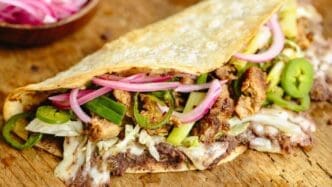Historically, humans have utilized sugar and honey as preservation methods for meat, prompting an investigation into whether these techniques still hold value in modern culinary practices.
A variety of meats underwent preservation with sugar and honey, showcasing a diverse range of outcomes. The journey began with a whole turkey cured in herbal honey, which was allowed to brine and soak for seven days. This technique produced a surprisingly pleasing result, imbuing the turkey with moisture and a delicate sweetness, despite initial skepticism about the method’s validity. However, the herbal notes were notably absent, raising questions about the necessity of additional ingredients.
The next candidate was a tomahawk steak, marinated in molasses, another unconventional choice. The result was a deeply flavorful and moist piece of meat that mirrored the characteristics of a well-prepared steak tip. The unexpected success of this experiment suggested potential for molasses in meat curing, despite its initial thick and sticky application.
Beef short ribs followed, using brown sugar as a coating instead of a liquid soak. This approach gave the ribs a distinct pellicle and a surprisingly tender texture, akin to a cured ham. While the ribs were rich and retained a satisfying flavor, the curing process seemed to reduce their inherent fattiness, creating a slightly more enjoyable dining experience.
With lamb legs, a mix of jam led to pleasantly surprising results. The jam’s penetration effectively neutralized the traditional gaminess of lamb, offering a taste reminiscent of elevated pastrami. This method proved the versatility and complementary nature of sweet jams in meat preparation.
In contrast, a ham soaked in hot honey failed to enhance the already cured meat, resulting in dryness reminiscent of jerky. This double curing process, despite the addition of spicy peppers, did not impart the expected heat, raising doubts about its efficacy in meat preservation.
The trial with pork ribs used caramel, yielding a candied rib that retained juiciness and provided an interesting dessert-like twist. This experiment highlighted the potential of caramelized coatings in providing unique texture and flavor without overwhelming sweetness.
A brisket cured with maple syrup and bourbon produced mixed results. While the bark was notably caramelized, the interior lacked the expected smokiness and distinctive bourbon flavor, suggesting that traditional methods may better preserve brisket’s inherent qualities.
Concluding the experimentation, salmon cured in agave nectar was found unsatisfactory. The resulting texture was mushy and unappealing, contrary to the expectations from similar sweetened curing processes. This outcome pointed to the challenges of fish preservation using sugary substances, as it failed to replicate the success found with other meats.
While preserving meat with sugary substances offers intriguing possibilities, the outcomes vary significantly depending on the type of meat and sweetener used. It seems that these ancient techniques may lend themselves more favorably to certain meats, requiring further exploration to determine their place in contemporary cooking.








